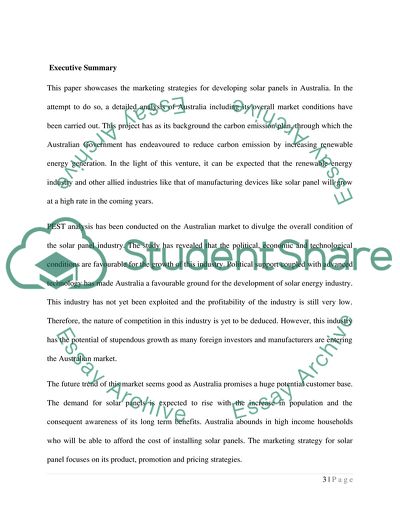Cite this document
(Marketing Strategy for Developing Solar Panels in Australia Research Paper - 1, n.d.)
Marketing Strategy for Developing Solar Panels in Australia Research Paper - 1. Retrieved from https://studentshare.org/marketing/1740525-marketing-strategy
Marketing Strategy for Developing Solar Panels in Australia Research Paper - 1. Retrieved from https://studentshare.org/marketing/1740525-marketing-strategy
(Marketing Strategy for Developing Solar Panels in Australia Research Paper - 1)
Marketing Strategy for Developing Solar Panels in Australia Research Paper - 1. https://studentshare.org/marketing/1740525-marketing-strategy.
Marketing Strategy for Developing Solar Panels in Australia Research Paper - 1. https://studentshare.org/marketing/1740525-marketing-strategy.
“Marketing Strategy for Developing Solar Panels in Australia Research Paper - 1”, n.d. https://studentshare.org/marketing/1740525-marketing-strategy.


